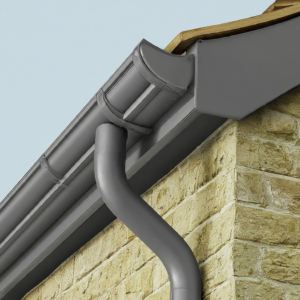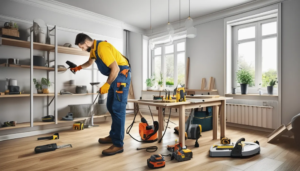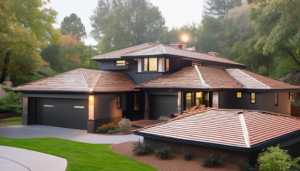
Installing soffits and gutters is a critical component of maintaining the structural integrity and aesthetic appeal of a home. However, it comes with a myriad of challenges that homeowners and professionals must navigate. This comprehensive report explores the key obstacles encountered during soffit and gutter installation, providing insights and expert advice to help mitigate these issues.
The Importance of Soffits
Soffits are essential for both ventilation and aesthetics. They cover the underside of roof eaves, preventing moisture buildup and providing a finished look to a home’s exterior. Properly installed soffits help ventilate the attic, which can prevent mold growth and improve energy efficiency.
The Role of Gutters
Gutters are crucial for directing rainwater away from the foundation of a home, preventing erosion, basement flooding, and structural damage. Effective gutter systems reduce the risk of water damage to both the roof and the home’s foundation, extending the lifespan of the property.
Common Challenges in Installing Soffits
Accurate Measurements and Cutting
One of the most significant challenges in soffit installation is ensuring accurate measurements and precise cutting. Mistakes in these areas can lead to gaps or overlaps, which compromise the soffit’s effectiveness and appearance.

Material Selection
Choosing the right material for soffits is crucial. Options include vinyl, aluminum, and wood, each with its own set of advantages and drawbacks. Vinyl is low-maintenance but can crack in cold weather. Aluminum is durable but more expensive, while wood offers a traditional look but requires regular maintenance to prevent rot and insect damage.
Ventilation Issues
Ensuring proper ventilation is another challenge. Inadequate ventilation can lead to moisture buildup, resulting in mold and mildew. It’s essential to select soffit materials that allow for sufficient airflow while protecting against pests and weather elements.
Dealing with Existing Structures
Working around existing structures, such as fascia boards and rooflines, can complicate soffit installation. It often requires custom fitting and adjustments, adding to the time and labor involved.
Related Article: Roof Gutter Cleaning Tips – DIY Homeowner’s Guide
Challenges in Gutter Installation
Ensuring Proper Slope
Gutters must be installed with a slight slope to ensure water flows towards the downspouts. Achieving this precise angle is challenging but critical to prevent standing water, which can lead to rust and leaks.
Secure Attachment
Attaching gutters securely to the house is essential to withstand weather conditions, including heavy rain and wind. This requires selecting the right hangers and fasteners and ensuring they are spaced correctly to support the weight of the gutters and water.
Seam Sealing
Sealing the seams where gutter sections meet is vital to prevent leaks. This process requires high-quality sealants and meticulous application to ensure long-term durability.
Dealing with Debris
Gutters are prone to clogging from leaves, twigs, and other debris. Installing gutter guards can mitigate this issue, but they must be chosen and fitted correctly to be effective. Regular maintenance is also required to keep gutters clear and functioning properly.

Latest Trends and Innovations in Soffit and Gutter Installation
Advanced Materials
Recent advancements in materials have introduced more durable and low-maintenance options. For instance, composite materials are becoming popular for their resistance to weather and pests. These materials can also be manufactured to mimic the appearance of wood, offering aesthetic benefits without the associated maintenance.
Smart Gutter Systems
Smart gutter systems equipped with sensors and automated cleaning mechanisms are emerging in the market. These systems can detect clogs and automatically clear them or alert homeowners to maintenance needs, reducing the risk of water damage.
Improved Ventilation Solutions
Innovations in ventilation design have led to soffit systems that provide better airflow while being easier to install. For example, some new systems include built-in baffles that direct airflow more efficiently, reducing the risk of moisture buildup.
Safety Concerns During Installation
Working at Heights
Installing soffits and gutters often requires working at significant heights, posing a risk of falls. Proper safety gear, such as harnesses and stable ladders, is essential. It’s also important to have a clear safety plan and ensure all workers are trained in fall prevention techniques.
Handling Materials
Many of the materials used in soffit and gutter installation can be heavy or unwieldy. Proper lifting techniques and equipment are necessary to prevent injuries. Additionally, some materials, like aluminum, can have sharp edges, requiring the use of gloves and protective clothing.
Weather Conditions
Weather can significantly impact the safety and feasibility of installation projects. Working in wet or windy conditions can be dangerous, making it essential to plan installations for times when the weather is favorable.
Environmental Considerations
Sustainable Materials
There is a growing trend towards using sustainable materials in construction, including soffits and gutters. Recycled aluminum and other eco-friendly options are becoming more widely available, helping to reduce the environmental impact of these installations.
Waste Management
Proper disposal of old materials and waste generated during installation is crucial. Many communities have regulations regarding the disposal of construction debris, and recycling options should be utilized whenever possible to minimize environmental impact.

Case Studies: Overcoming Installation Challenges
Residential Installation in Harsh Climates
A recent project in a coastal area faced significant challenges due to high winds and salt air, which can corrode materials. The installation team opted for stainless steel fasteners and specially coated aluminum soffits and gutters to withstand the harsh conditions. They also installed extra bracing to secure the gutters against strong winds.
Historic Home Renovation
Renovating historic homes presents unique challenges, as modern materials and techniques must be adapted to fit older structures. In one case, the installation team had to custom-make wooden soffits to match the original design while using modern ventilation techniques to ensure adequate airflow. The gutters were carefully selected to match the period aesthetic while providing modern functionality.
Expert Insights and Recommendations
Interview with a Professional Installer
John Smith, a professional soffit and gutter installer with over 20 years of experience, shares his insights: “The key to a successful installation is planning and precision. Each home is different, so you need to be adaptable and ready to problem-solve. Investing in high-quality materials and taking the time to do it right will pay off in the long run.”
Advice from a Building Inspector
Jane Dinshow, a building inspector, emphasizes the importance of compliance with local building codes: “Ensure your installation meets all local regulations, particularly regarding ventilation and water drainage. Proper installation not only protects the home but also ensures it meets safety standards.”



